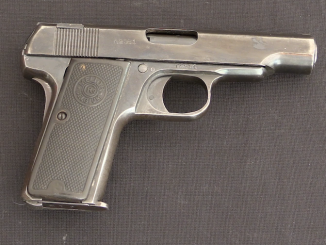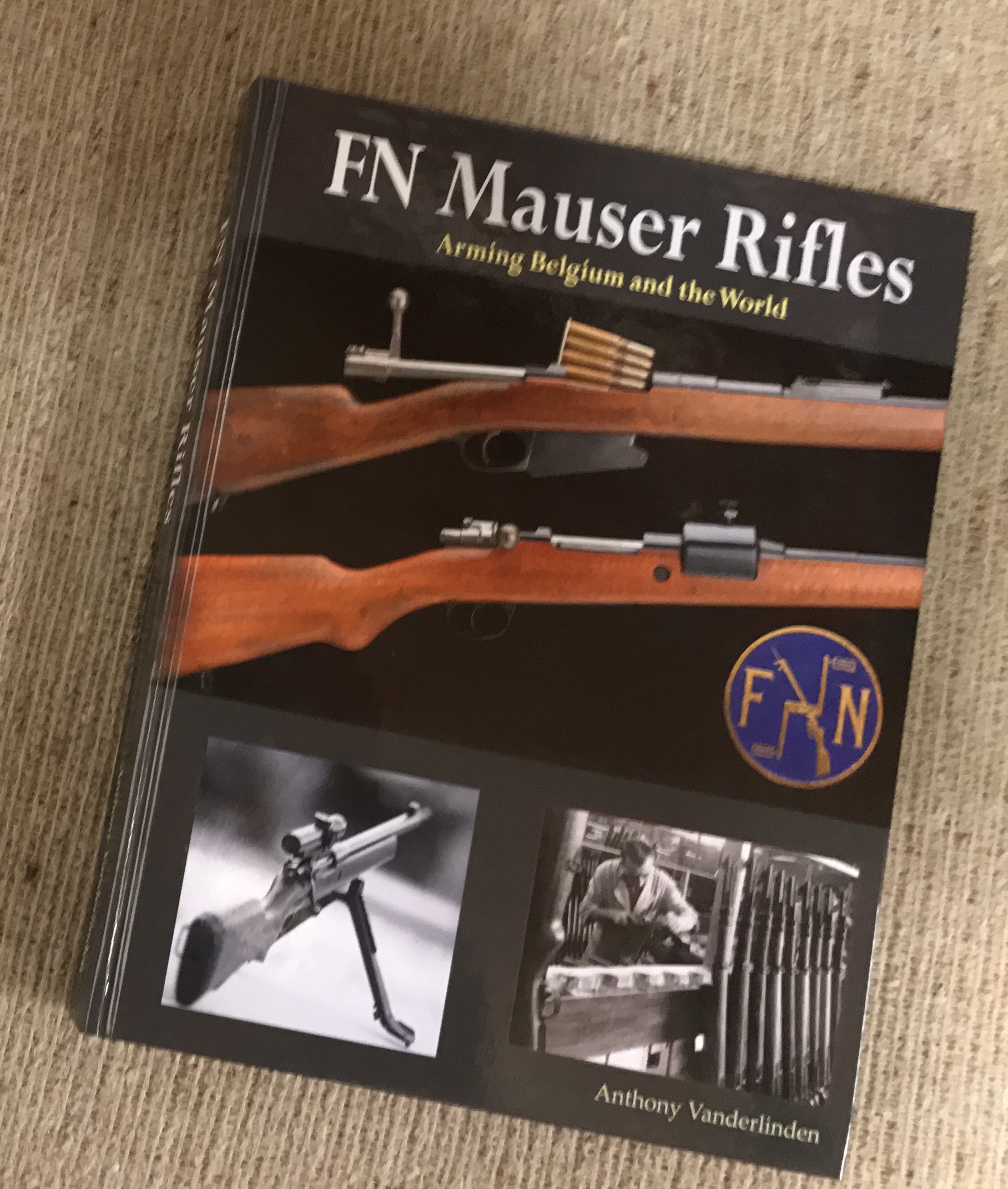I previously filmed one of the Model 1884 Luxembourg Gendarmerie Nagant revolvers, but I got my hands on one with the original bayonet, and I wanted to show you that. These are extremely rare revolvers, especially with the matching original bayonets.
Here is the original video, with more details on the mechanics of the Nagant:




The Good Idea Faerie strikes again! I gotta wonder how many gendarmes stabbed themselves in a delicate place trying to holster this thing during its service lifetime
I wonder if it was more of a “don’t grab my pistol” than actually used to stab with.
we had bayonets on our shotguns in the USN, and that’s what those were for.
Hi, bayonets on shotty`s to stop people from grabbing hold of them—I don`t think so.
Imagine yourself as an angry rioter attempting to rush forward and grab a gendarme’s gun because you hate how the government is handling your taxes. Is it easier to grab the gun with the very sharp cruciform spike on the barrel or the gun without a spike? And, assuming the gendarme has his gun on a lanyard to keep it from being stolen, is it wise to even try stealing the gun at all if it’s actually loaded and ready to shoot you in the FACE?
most people have never been fired at. they have zero fear of the shotgun. everyone’s been cut. they know what that is and what it feels like. it worked. someone got grabby with the guys carrying .45s and you show them the bayonet and suddenly they are afraid. they didn’t fear the pistol. but the knife on a pipe..yeah, they calmed done right quick.
In MOBUA, the main function of the bayonet is weapon retention. Before it became unwoke, police tactical teams armed with M16 type rifles were trained to fix the M7 bayonet when engaged in house clearing.
Criminals often learn weapon grabs in prison, and the barrel of the rifle was the target when the officer was coming through a door. There’s a very important difference between grabbing the first eight inches of the barrel of a rifle and grabbing six and three-quarters inches of sharpened steel in that context.
cheers
eon
All of which is fine, but the device in question is a spike bayonet with no sharpened edge to discourage grabbing. As a matter of fact, it provides more to grab. You’ve got rioters? Wading in with lead weighted truncheons and strong arms would be a better choice.
Fun fact, those picturesque capes that French gendarmes wear were weighted with lead shot (maybe still are). Officially, so they would hang correctly, but les flics knew how to use them as a weapon. A broken nose usually stops even the most obstreperous.
“My French teacher told us that in the 1960s he witnessed a riot in France in which Gendarmes wearing capes, in the thick of the rioters, swung (their capes) around and somehow caused facial injuries to those immediately around them. He learned from people present that the capes were weighted with lead for this purpose.”
From what I’ve read of 19th Century melee combat and riots, I think I’d like a bayonet option on my single-loading revolver. Once you fire six rounds, you’d better have something, and since Gendarmerie are a lot more likely to be operating in small elements rather than the mass of regular infantry? Bayonet looks like a decent backup.
I do like the cruciform bayonet. If you’re gonna do “bayonet”, that’s the way to go: Punch that in, out, in, out, and I doubt that anyone is going to be giving you any additional problems. Or, be breathing after they’ve had some time to bleed out.
Well, if you puncture both lungs belonging to the would-be gun-thief, he won’t be breathing very well at all, even if he isn’t instantly dead. He’d just take a few minutes to suffocate.
I bought a flintlock one-shot pistol with a spring-loaded bayonet along the top of the barrel, hinged at the muzzle, with a little slide at the rear you pull to release the kraken^Wbayonet. Turns out to be useless as a pistol; the frizzen lid is the wrong material and could never generate a spark, but the lock geometry is so wrong that the flint arm can’t hit or raise the frizzen lid, so not sparking doesn’t matter. It kind of annoyed me when I discovered that, but I call it my Chinese warlord flintlock, since someone went to a lot of trouble to mimic a flintlock without understanding it. It would make a dynamite Halloween accessory for a pirate costume, but not in California.
Authentic Turkish and etc. blunderbuss type weapons often had locks taken from foreign made military arms such as British “Brown Bess” or French Charleville muskets, or British or French cavalry single-shot pistols.
Using a proven, reliable lock avoided the problem of trying to make one themselves. And no, the Turkish or other “Mediterranean” miquelet locks were not generally all that reliable, to say nothing of the questionable metallurgy.
cheers
eon
How is this relevant?
This contraption pushes all of my buttons! It’s old-school European anal-retentive machining at its best, it’s impractical, it’s Late Victorian, it’s Steampunk, it’s recherche’, it’s fin de siecle, it’s avant garde, and it’s NOT a 9mm burpgun of some sort.
My gratitude for the pleasure of viewing such a complete home run device knows no bounds.
I’m trying to imagine what a bayonet charge by the Luxemburg Gendarmerie would look like.
You will likely picture a bunch of guys with revolvers and riot shields bearing down on you, so grabbing a single gun from them will be impossible. Either you get shot in the face, stabbed full of holes, or bashed to a jelly with the shields. I could be wrong.
I’m in Luxembourg. All the comments about the French gendarmerie and riot police don’t apply. The Corps des Gendarmes et Volontaires was newly created in 1881 for the neutral state.
My guess is the pistol bayonet was only used ceremonially and was added as a “why not” option when the new weapons were ordered for the new force.